A week or so ago I had the pleasure of attending Lessons Learned: American Schoolgirl Embroideries at the Baltimore Museum of Art; an exhibition of samplers and silk embroideries made by American girls from schools in Maryland and the East Coast in the 18th and 19th centuries.
 |
| Detail from the Queen of Sheba embroidery, 1819, Baltimore Museum of Art |
There was one embroidery that just knocked my socks off and it was quite large (approx. 3'x5'); a rendering of the Queen of Sheba's visit to King Solomon...
I didn't really know too much about the story other than that it appears in the Old Testament. Depending on which version you consult, the short narrative goes something like this:
And when the Queen of Sheba heard of the fame of Solomon concerning the name of the LORD, she came to prove him with hard questions. And she came to Jerusalem with a very great train, with camels that bore spices, and very much gold, and precious stones: and when she was come to Solomon, she communed with him of all that was in her heart. And King Solomon gave unto the Queen of Sheba all her desire, whatsoever she asked, beside that which Solomon gave her of his royal bounty. So she turned and went to her own country, she and her servants.(I Kings 10 v.1-13)
The historical popularity of the tale seems an enigma of sorts with various differences and meanings attributed to Jewish, Islamic, Christian and Ethiopian traditions.
 |
| Solomon and the Queen of Sheba, Giovanni Demin, 1789-1859 |

In the 18th and 19th century, even girls of modest means were taught sewing and simple embroidery stitches on samplers. Families that could afford it could pay an additional fee over and above the cost of academics for their daughters to receive advanced needlework instruction at boarding or day schools. After completing their coursework, girls would return home with an elaborate sampler or elegant picture to present to their parents as proof of their accomplishment.

One Jewish version of the story says that the Queen mistook the shiny marble floor as a pool of water and lifted her dress, showing off her legs. Evidently she was reprimanded, not for the immodest display of her gams but for the fact that they were overly hairy.
I checked the embroidery to perhaps find some proof of this...

But alas, found none.
The plush, silk chenille carpet beneath the Queen's feet...

Contrasted beautifully with the flat silk embroidery of the black and white tile...
The lions resting at the foot of the stairs are wonderfully wrought with their padded paws, bushy eyebrows, and manes of chenille.
Even the stairs were opulent with goldwork swirls amidst lines of clear glass beads...
This is the first piece I've seen that contained so much chenille thread. It must have come on huge spools for use at the school. The chenille threads were much finer than any that I have found commercially available today.
Note the use of the chenille thread in stitching the column below...
Despite the allure of all the Queen's riches, my favorite part of the embroidery is this urn which stand atop the trompe l'oeil marble column...

Something about the muted roses, the hint of blue and the dust green garland set against the silver gray of the urn...
Manifests a faded elegance worthy of a Queen.
(To be continued...)









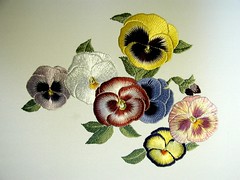
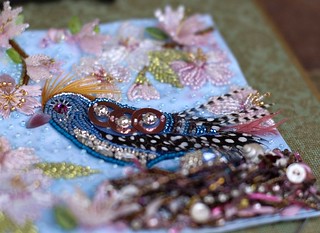
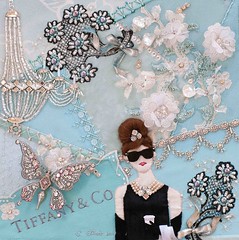
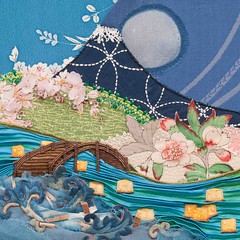
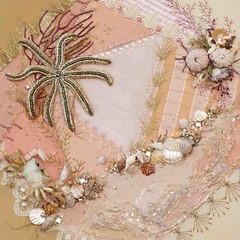












10 comments:
This piece is amazing! The work that went into this, mind boggling. How many hours must have gone into it.
Thank you for this historical lesson on this beautiful piece.
FlowerLady
Thanks for this most wonderful report!
Where you live has such fantastic opportunities!
Deb
Wowwwww
What detailed, exquisite work!!
My goodness, how stunning!
Like you, I suspect the attraction of the story was the opportunity to throw every possible technique and material at it...
You are so fortunate to live close to such an amazing museum! I can't imagine working on a piece this size. Wow! Thanks for sharing its details. I wonder how long it took to complete it! If only things like this could share their secrets!
Fabulous and fascinating!
I enjoyed seeing all the details of this piece - thank you! I think that the urn is my favourite too - lovely!
Oh my gosh…I'm speechless (or should I say…'comment less'. Thanks for sharing !!
Post a Comment